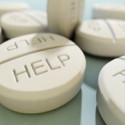Alcohol intervention group looks to change party culture

Alcohol intervention may change the party culture
After taking a writing course on public health and seeing the dangers of alcohol firsthand, senior microbiology major Jonathan Higgins decided the college “party culture” needed to be changed. That’s when he learned of a program that aimed to change culture and educate people about the dangers of alcohol consumption.
Student Emergency Medical Services began at the CU-Boulder in 2004, exactly two months after CU freshman Lynn “Gordie” Bailey died after being encouraged to drink four handles of whiskey and six bottles of wine in 30 minutes, during a fraternity hazing event.
Days before, CSU student Samantha Spady died in the Sigma Pi fraternity after a night of binge drinking, suspected of downing 30 to 40 drinks.
In an effort to stop other alcohol-related deaths, the SEMS mission, according to the SEMS Web site, is “to educate and empower students to address excessive alcohol and drug use as a cultural issue, by collaborating with university students and administrations to adopt the SEMS student organization model, so that students can create positive cultural change and contribute to reducing alcohol and drug-related deaths in this population.”
The SEMS Foundation was started to extend the successful model formed at CU-Boulder to other universities.
After years of several failed attempts to bring the program to Fort Collins, it has arrived and students are focused to change the CSU campus culture.
SEMS-CSU aims to provide a different approach for educating students about the dangers surrounding alcohol use.
“I’m interested to see how it will change the ‘party culture’ [on campus],” said Kelsey Galiano, a senior family and consumer studies major. “I see that it’s a great opportunity for students who have the skills to help to be able to reach out and support those who need it.”
Focusing on awareness, prevention and intervention, students involved in the program are given the necessary training to educate peers about what’s really happening when you drink alcohol.
“We do not preach abstinence as a viable solution; however, we do not exclude it either,” Higgins said. “We address the dangerous use of alcohol because there is a misunderstanding of [what] dangerous use [is].”
The program also teaches students about ways to handle a hazardous situation and the proper steps to take.
“Not only is it awareness, not only is it prevention; it’s what do you do when a dangerous situation does occur,” Higgins said. “Right now we get a lot on avoiding dangerous situations, but when a dangerous situation does arise, what’s the next step? The waters are muddy; beliefs are varied and often quite dangerous.”
The general belief is to let intoxicated people sleep instead of checking pulse, respiration and level of awareness/consciousness.
SEMS-CSU is working to intervene and help students understand what to do at the point of decision.
“The consensus is usually to let them sleep it off, but that has accounted for too many deaths,” Higgins said. “[We want] to provide awareness and prevention of the dangers from a medical perspective, specifically an emergency medical perspective.”
The program is challenging people to address the way college students choose to consume alcohol and other drug products as well as how to properly respond to drug or alcohol related emergencies.
In collaboration with SEMS-Fort Collins, the programs hope to “develop a safer student experience through peer-to-peer education and quality emergency care using a general education program facilitating discussion of health-related topics relevant to the college culture in and around Fort Collins,” a SEMS flyer stated.
With the help of local sponsors, including Coors and the New Belgium Brewing Company, SEMS-CSU also hopes to develop a liaison program to provide people with better tools to address a situation.
The organization looks to provide free CPR classes to students to better prepare them to act in a hazardous situation.
The CPR training would help, Higgins said: “When no one else is there, we [liaisons] know what to do.”
Students interested in getting involved with SEMS CSU can attend a chapter meeting Sunday at 5 p.m. in the Grey Rock Room of the Lory Student Center.
The organization said it is in need of members from diverse majors, not just those interested in science and public health.
The organization is looking for students interested in accounting, graphic and Web design, grant writing, logistics and coordinating.
“It’s like starting a business,” Higgins said. “A lot of different areas are available to get involved in and you don’t have to bring any credentials to the table.”
Staff writer Kayla Huddleston can be reached at [email protected].
_______________
source: © Copyright 2008 Rocky Mountain Collegian

